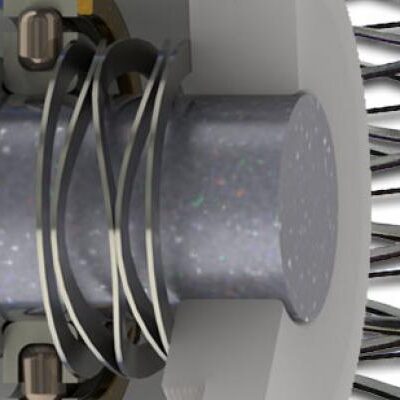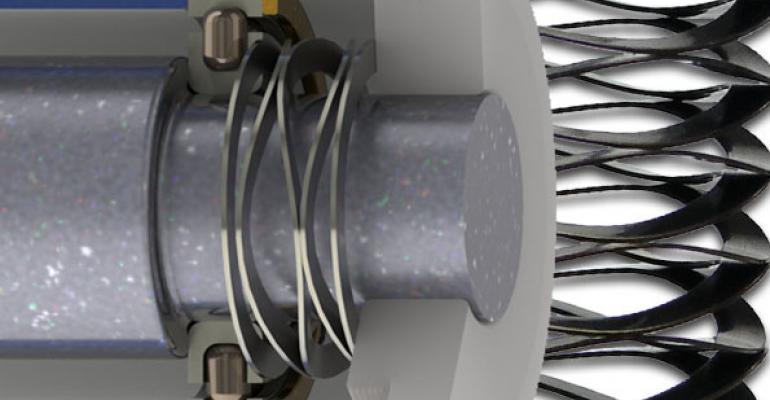Simplifying Design: Spiral Wound Wave Springs

When company mandates for better cost-to-performance ratios force engineers to either streamline existing designs or begin anew, replacing traditional fasteners is a good first step.
Three alternatives to traditional retainers are retaining rings, spiral rings, and wave springs. More compact than conventional hardware, these can work alone or in concert to fulfill functional design requirements while eliminating extraneous material (and therefore, final weight and cost of your application.)
One ring application is bearing retention. When used in conjunction with wave springs (in situations that require a preload) they serve as a shoulder for the spring, and provide rigid and resilient endplay takeup.
Consider such one specific bearing-retention application in which the retainer must accommodate high axial loads and rotational speed.
Traditionally, such bearings are held in place with a combination of an endcap and wave spring. In contrast, substituting a spiral-wound multiple-turn wave spring allows 360° contact with entire periphery of groove, with no gaps — and because there are no lugs, there is a radial space savings.
Coiled versions also eliminate sharp edges, useful in many safety-critical designs.
In fact, by replacing the endcap with a multiple-turn spiral ring, the final application is streamlined while still accommodating the bearing’s axial loads and high rpm. The shoulder is effectively created with minimal material and space.
Below, a closeup of the final installation is shown without the endcap. In steel or exotic alloys, the rings can sport oil dip, passivation, or zinc phosphate finishes.

Learn more:
More than Parts. A True Partnership.
Our passion is creating the best rings, springs, and clamps. Our mission is to make your work a success. We are here for you.
